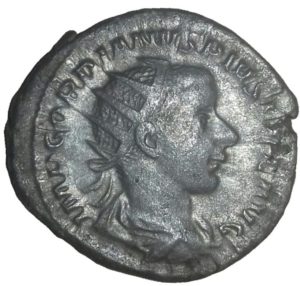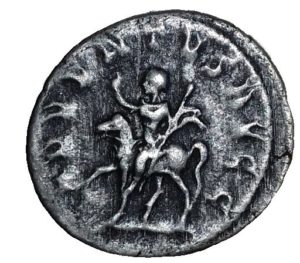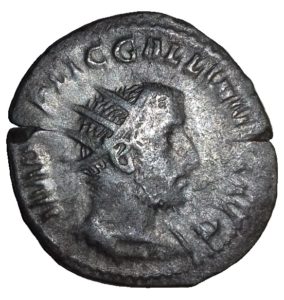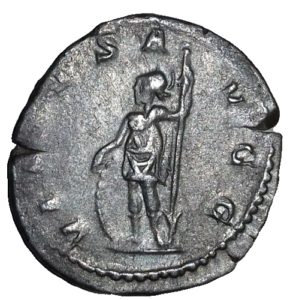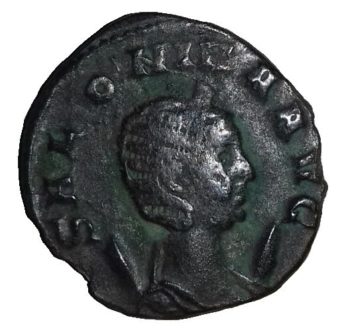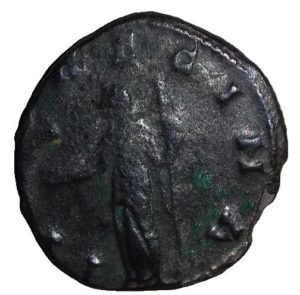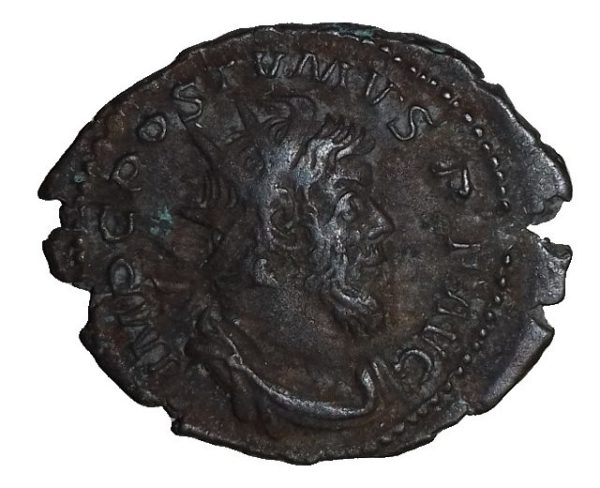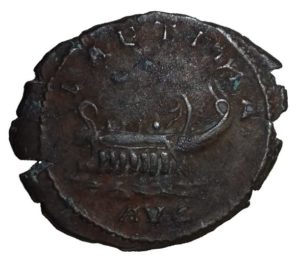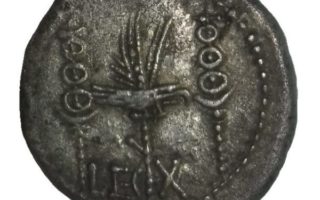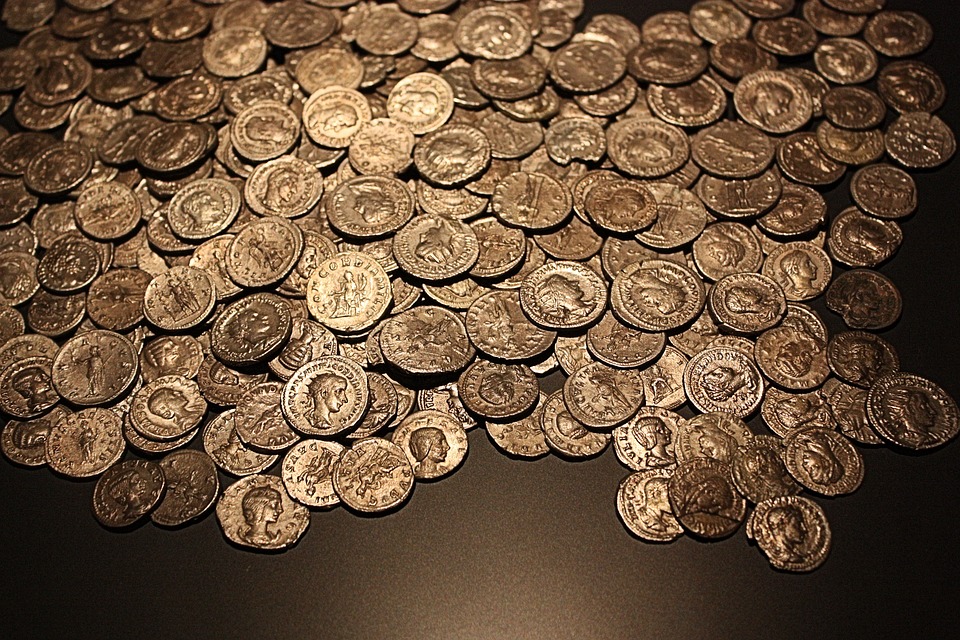Hello, two weeks ago, I presented “5 Roman coins in copper”. It is therefore normal that I now present “5 Roman coins in billon”. In the same way as in the previous article, we are going to do numismatics here by deciphering them and trying to understand their meanings as well as the messages they wanted to convey in Roman times. In this article, therefore, there will be analysis, description and interpretation. Good reading.
First Roman coin in billon: the Antoninianus of Gordian III
This first Roman coin is an Antoninianus of Gordian III. Gordian III is a Roman emperor born on January the 20th, 225 AD and died on February the 11th, 244 AD in Circesium (city of Mesopotamia). His reign began in his thirteenth year. At first, being too young to reign, he was helped by his parents as well as senators. His reign was short since it lasted only 6 years as he died in 225 AD, in his nineteenth year.
This billon coin weighs 4.13 grams for 24mm in diameter. On its obverse, we can see the bust of Gordian III, surrounded by the captions “IMP GORDIANUS PIVS FEL AVG” (The pious and happy August Emperor Gordian). On his reverse, we can see Gordian III standing, holding a transverse pole in his right hand and a globe in his left hand. The inscribed legend is “P M TR V COS II PP” (grand pontiff, endowed with the fifth tribunitian power, consul for the second time, father of the country). This coin was therefore minted when Gordian III was pious and happy but also when he bore the titles of “Grand Pontiff”, “father of the country”, “consul” and that he had the “tribunitian power”.
Second Roman coin in billon: the Antoninianus of Philip the Arab
This second Roman coin is an Antoninianus of Philip the Arab. Philippe I is a Roman emperor born around 204 AD and died in 249 AD in Verona (Italy). During his reign, which was rather short: about 6 years, he was particularly benevolent towards Christians and would even have converted to Christianity which would make him the first Christian Roman emperor but, among other things, he also made a campaign crowned with success against Quades and Carps. He died in combat, in battle with the troops of Decius.
This billon coin weighs 3.10 grams for 23mm in diameter. On its obverse, we can see the bust of Philip I the Arab, surrounded by the captions “IMP M IVL PHILIPPVS AVG” (Emperor Marc Jules Philippe auguste). On his lapel, we can see Philip I, on horseback and in military clothes, holding a haste in his left hand and raising his right hand. The inscribed caption is “A DVEN TVS AVGG” (the arrival of the Augustes). This coin was therefore struck when Philip I was august and it seems to announce his return as indicated by the legend on the reverse. Indeed, the horse and the various military objects “haste” and “military clothes” show that he has returned from a battle and his raised right hand seems to show a sign of victory. We can therefore imagine that this coin was minted following the return of the emperor, from a victorious battle.
Third Roman coin in billon : the Antoninianus of Gallienus
This third Roman coin is an Antoninianus of Gallienus. Gallienus is a Roman emperor born in 218 AD and died in 268 in Milan (Italy). During his reign, he will have mainly tried to unite an Empire divided following many revolts which took place in all the different regions. He died in 268 AD, assassinated in Mediolanum, current city of Milan.
This billon coin weighs 3.09 grams for a 21mm diameter. On its obverse, we can see the bust of Gallienus, surrounded by the captions “IMP C LIC GALLIENVS AVG” (The emperor Caesar Publius Licinius Gallienus auguste). On his lapel, Virtus (manhood) can be seen, wearing military attire and a helmet, and holding a shield in his right hand and a haste in his left hand. The inscribed caption is “VI [RTV] S AVGG” (The Virility of the Augustus). This coin was therefore struck when Gallienus was August but above all, the reverse shows us Virtus ready to go to war. Moreover, the legend of the backhand confirms us in the idea of this departure towards a battle. We can therefore imagine that this coin was minted just as Gallienus was about to go to war.
Fourth Roman coin in billon : the Antoninianus of Salonina
This fourth Roman coin is an Antoninianus from Salonina. Salonina was a Roman Empress and was the wife of Emperor Gallienus. She was married to Gallienus in 243 AD and had two children with the emperor: Valérien II and Saloninus. His reign lasted from 254 to 268 AD. Like her husband, she died assassinated in 268 AD in Milan.
This billon coin weighs 2.62 grams for a 19mm diameter. On its obverse, we can see the bust of Salonina, surrounded by the captions “SALONINA AVG” (Salonina auguste). On its reverse, we can see Juno holding a long scepter in the left hand and a hook in the right hand. The inscribed legend is “IV [NO] REGINA” (Juno queen). This coin was therefore struck when Salonina bore the title of august.
Fifth Roman coin in billon : the Antoninianus of Postumus
This fifth Roman coin is an Antoninianus of Postumus. Postumus is a Gallic emperor whose date of birth is unknown and who died in 269 AD, in Mainz (Germany). His reign consisted of ruling Gaul, Spain and Brittany. While at the same time, Gallienus ruled the Empire. This is why I said above that the Empire under Gallienus was divided. Postumus died in 269 AD, killed by a revolt of soldiers in Mainz.
This billon coin weighs 3.47 grams for 22mm in diameter. On its obverse, we can see the bust of Postumus, surrounded by the captions “IMP C POSTVMVS PF AVG” (The emperor, caesar, Postumus, pious, happy, august). On its reverse, we can see a galley sailing to the left. The inscribed caption is “LAETITIA AVG” (Joy of the August). This coin was therefore struck when Postumus bore the titles of Augustus and Caesar and he was considered happy. The reverse shows a galley, a means of transportation commonly used at the time. So one can imagine that Postumus was returning from a trip or a battle and was therefore happy.
Here are the presentations of 5 Roman coins in billon. I hope you have enjoyed this article and that it has taught you some things. Also, feel free to comment out which coin you would like me to feature. But also, what topic would you like me to talk about for a future article. The next article will be “5 Roman coins in silver”. See you next week !
Receive my free book Around the Roman Coin by clicking here


